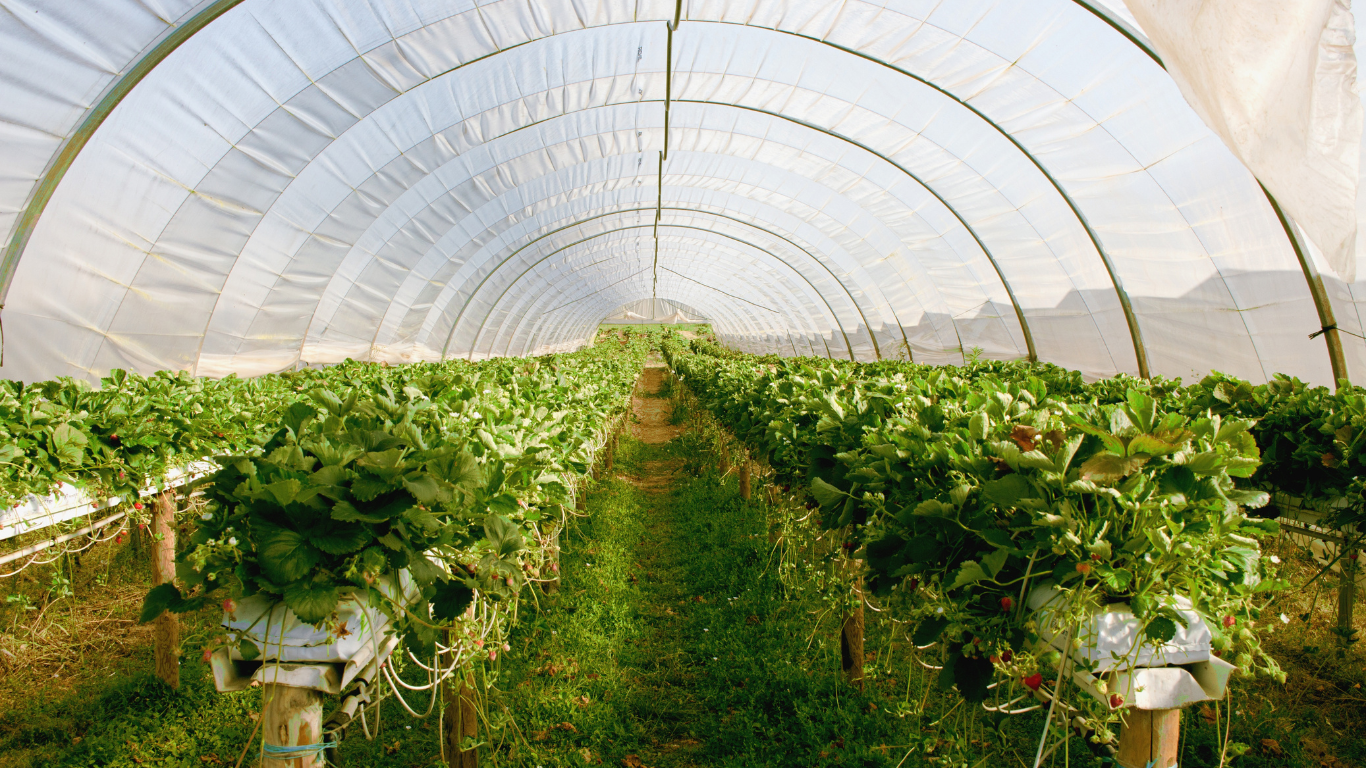Welcome to the world of the Vanilla Strawberry Hydrangea, a breathtaking flowering shrub that brings a cascade of color to gardens and landscapes everywhere. If you’re a gardening enthusiast, a homeowner looking to elevate your yard, or simply curious about this eye-catching plant, you’ve landed in the right place. In this comprehensive, 3000+ word guide, we’ll explore everything you need to know about the Vanilla Strawberry Hydrangea—from its origins and characteristics to care tips, planting advice, and even its cultural appeal. Written in an informational tone and optimized for SEO, this post will answer all your questions about this delightful hydrangea variety. Let’s dig in!
What Is the Vanilla Strawberry Hydrangea?
The Vanilla Strawberry Hydrangea (Hydrangea paniculata ‘Renhy’) is a standout cultivar of the panicle hydrangea family, renowned for its dramatic, color-changing blooms and easy-care nature. Introduced by French breeder Jean Renault in 2009, this shrub earned the prestigious “Top Plant of 2010” title from the American Nursery and Landscape Association—and for good reason. Its enormous, cone-shaped flower heads start as creamy white in midsummer, gradually shift to soft pink, and mature into a rich strawberry red by late summer or early fall. This multi-stage color transformation often results in a multicolored display, with blooms showcasing all three hues at once.
Standing 6-8 feet tall and spreading 4-5 feet wide, the Vanilla Strawberry Hydrangea features sturdy red stems that contrast beautifully with its dark green foliage. Unlike some hydrangeas, its flower color isn’t influenced by soil pH, making it a reliable choice for gardeners across various regions. Hardy in USDA zones 3-8 (sometimes 9 with care), this deciduous shrub blooms on new wood, ensuring consistent flowering even after harsh winters.
Origins and History of Vanilla Strawberry Hydrangea
The Vanilla Strawberry Hydrangea traces its roots to the broader Hydrangea paniculata species, native to China and Japan. Panicle hydrangeas have long been cherished for their resilience and large, conical blooms. The ‘Renhy’ cultivar, branded as Vanilla Strawberry™, emerged from a breeding program in France aimed at enhancing the aesthetic appeal of these shrubs. Its name reflects the dessert-like progression of its blooms—starting with a “vanilla” white and ending with a “strawberry” red.
Since its commercial debut, this hydrangea has become a garden favorite worldwide, prized for its vibrant display and adaptability. Its ability to thrive in urban conditions and tolerate air pollution further boosts its popularity, especially in city landscapes.
Key Characteristics of Vanilla Strawberry Hydrangea
What sets the Vanilla Strawberry Hydrangea apart? Here’s a breakdown of its defining traits:
Appearance
- Blooms: Large, conical panicles (up to 7-12 inches long) transition from creamy white to pink to strawberry red.
- Foliage: Glossy, dark green leaves provide a lush backdrop to the flowers.
- Stems: Reddish stems add structural interest and support the heavy blooms.
- Size: Grows 6-8 feet tall and 4-5 feet wide at maturity.
Growth Habit
- Upright: A multi-stemmed shrub, though it can be trained into a tree form.
- Fast-Growing: Often reaches full size within 1-3 years.
Blooming Season
- Timing: Flowers from midsummer (June/July) through late fall (September/October).
- Duration: Continuous blooming creates a long-lasting show.
Hardiness
- Zones: Thrives in USDA zones 3-8; can survive zone 3 with winter protection.
- Resilience: Tolerates cold winters and blooms on new growth, unaffected by late frosts.
How to Plant Vanilla Strawberry Hydrangea
Planting a Vanilla Strawberry Hydrangea is straightforward if you follow these steps. Timing and location are key to its success.
When to Plant
- Best Times: Early spring (after the last frost) or late fall (before dormancy).
- Avoid: Midsummer heat, which can stress young plants.
Choosing a Location
- Sunlight: Full sun (6-8 hours daily) for optimal blooms; tolerates partial shade (4-6 hours) with fewer flowers.
- Space: Allow 4-5 feet between plants for hedges or more for standalone specimens.
- Soil: Well-drained, fertile soil with medium moisture; not picky about soil type.
Planting Steps
- Dig the Hole: Make it twice as wide and as deep as the root ball.
- Position the Plant: Set the crown (where roots meet stems) at soil level.
- Backfill: Fill with soil, tamp gently, and water thoroughly.
- Mulch: Add a 2-3 inch layer of organic mulch (e.g., bark or compost) around the base, keeping it away from the stems.
Spacing Tips
- Hedges: Plant 4 feet apart for a dense look.
- Specimens: Space 5-6 feet apart to highlight individual plants.
Vanilla Strawberry Hydrangea Care Guide
The Vanilla Strawberry Hydrangea is low-maintenance, but proper care ensures vibrant blooms and healthy growth. Here’s how to nurture it:
Watering
- Frequency: Water deeply once a week (1 inch), more during hot, dry spells.
- Soil Check: Let the top 2-3 inches dry out between waterings to avoid root rot.
- New Plants: Water every 2-4 days for the first 6 weeks to establish roots.
Soil and Fertilizing
- Soil Preference: Moist, well-drained, organically rich soil; slightly acidic to neutral pH (6.0-7.0).
- Fertilizer: Apply a balanced, slow-release fertilizer (e.g., 10-10-10) in spring and early summer. Avoid overfeeding after midsummer to prevent weak growth.
Pruning
- Timing: Late winter or early spring, before new growth starts.
- Method: Cut back by one-third to shape the plant and remove dead wood. Since it blooms on new wood, pruning won’t affect flowering.
- Optional: Deadhead spent blooms post-flowering for tidiness.
Sunlight
- Ideal: Full sun for the best color and bloom production.
- Adaptable: Partial shade works in hotter climates, though blooms may be less prolific.
Winter Care
- Zones 3-4: Mulch the root zone with 3-4 inches of organic material (e.g., straw, leaves) to insulate against freezing.
- Dried Blooms: Leave them on for winter interest or cut for indoor décor.
Propagating Vanilla Strawberry Hydrangea
While propagation is possible with many plants, the Vanilla Strawberry Hydrangea is a patented cultivar (PP#20,670), meaning commercial propagation is restricted. However, for personal use, you can try these methods (check local laws):
Stem Cuttings
- When: Late spring or early summer.
- Steps:
- Cut a 4-6 inch healthy stem with a few leaves.
- Remove lower leaves and dip the cut end in rooting hormone.
- Plant in moist, well-draining soil and cover with a plastic bag to retain humidity.
- Place in indirect light; roots form in 4-6 weeks.
Note on Seeds
- The flowers are sterile, so seed propagation isn’t an option.
Benefits of Growing Vanilla Strawberry Hydrangea
Why choose the Vanilla Strawberry Hydrangea for your garden? Here are its top perks:
Aesthetic Appeal
- Color Show: The evolving blooms create a dynamic, multi-season display.
- Versatility: Perfect as a hedge, border, or focal point.
Practical Uses
- Cut Flowers: Fresh blooms brighten bouquets; dried ones add rustic charm indoors.
- Pollinators: Attracts bees and butterflies, boosting garden biodiversity.
Low Maintenance
- Hardiness: Thrives in diverse climates and resists pests/diseases with proper care.
- Longevity: Can live 40-50 years with good conditions.
Common Problems and Solutions
Even the resilient Vanilla Strawberry Hydrangea can face challenges. Here’s how to address them:
Overwatering
- Signs: Yellowing leaves, soft stems, root rot.
- Fix: Reduce watering; ensure proper drainage.
Pests
- Culprits: Aphids, spider mites, scale.
- Solution: Spray with insecticidal soap or neem oil; encourage natural predators like ladybugs.
Leggy Growth
- Cause: Too little sunlight.
- Fix: Relocate to a sunnier spot; prune to encourage bushiness.
Browning Blooms
- Cause: Drought or heat stress.
- Fix: Increase watering during dry spells; provide afternoon shade in hot climates.
Diseases
- Powdery Mildew: White coating on leaves in humid conditions.
- Solution: Improve air circulation; apply fungicide if severe.
Vanilla Strawberry Hydrangea vs. Other Hydrangeas
How does the Vanilla Strawberry Hydrangea compare to its relatives? Here’s a quick look:
| Feature | Vanilla Strawberry | Bigleaf Hydrangea | Limelight Hydrangea |
|---|---|---|---|
| Bloom Color | White to pink to red | Blue/pink (pH-based) | Green to white |
| Bloom Time | Midsummer to fall | Early summer | Late summer to fall |
| Hardiness | Zones 3-8 | Zones 5-9 | Zones 3-8 |
| Sun Needs | Full sun to part shade | Partial shade | Full sun to part shade |
| Pruning | New wood | Old wood | New wood |
The Vanilla Strawberry’s unique color shift and cold tolerance make it a standout choice.
Design Ideas with Vanilla Strawberry Hydrangea
Incorporate the Vanilla Strawberry Hydrangea into your landscape with these ideas:
- Hedge: Plant in a row for a colorful privacy screen.
- Mixed Border: Pair with ornamental grasses, hostas, or coral bells.
- Specimen: Showcase as a standalone shrub near a patio or entrance.
- Tree Form: Train into a small tree for a dramatic focal point.
- Containers: Use in large pots for portable beauty on decks or balconies.
Cultural Significance and Fun Facts
The Vanilla Strawberry Hydrangea carries a modern charm but ties into hydrangeas’ broader symbolism of gratitude and abundance. Its dessert-inspired name adds a playful twist, making it a popular gift plant.
Fun Facts
- It can produce blooms up to 12 inches long in ideal conditions.
- The red stems intensify in color as temperatures drop.
- It’s a favorite among florists for both fresh and dried arrangements.
Conclusion: Why Vanilla Strawberry Hydrangea Belongs in Your Garden
The Vanilla Strawberry Hydrangea is a showstopper that combines beauty, resilience, and versatility. Its evolving blooms—from vanilla white to strawberry red—offer months of visual delight, while its easy-care nature suits gardeners of all levels. Whether you’re enhancing a border, crafting a hedge, or simply admiring its elegance, this hydrangea delivers. Ready to plant one? Visit your local nursery or order online, and enjoy the sweet rewards of this garden gem!
Have you grown a Vanilla Strawberry Hydrangea? Share your experience in the comments below! For more gardening inspiration, explore our other plant guides.




